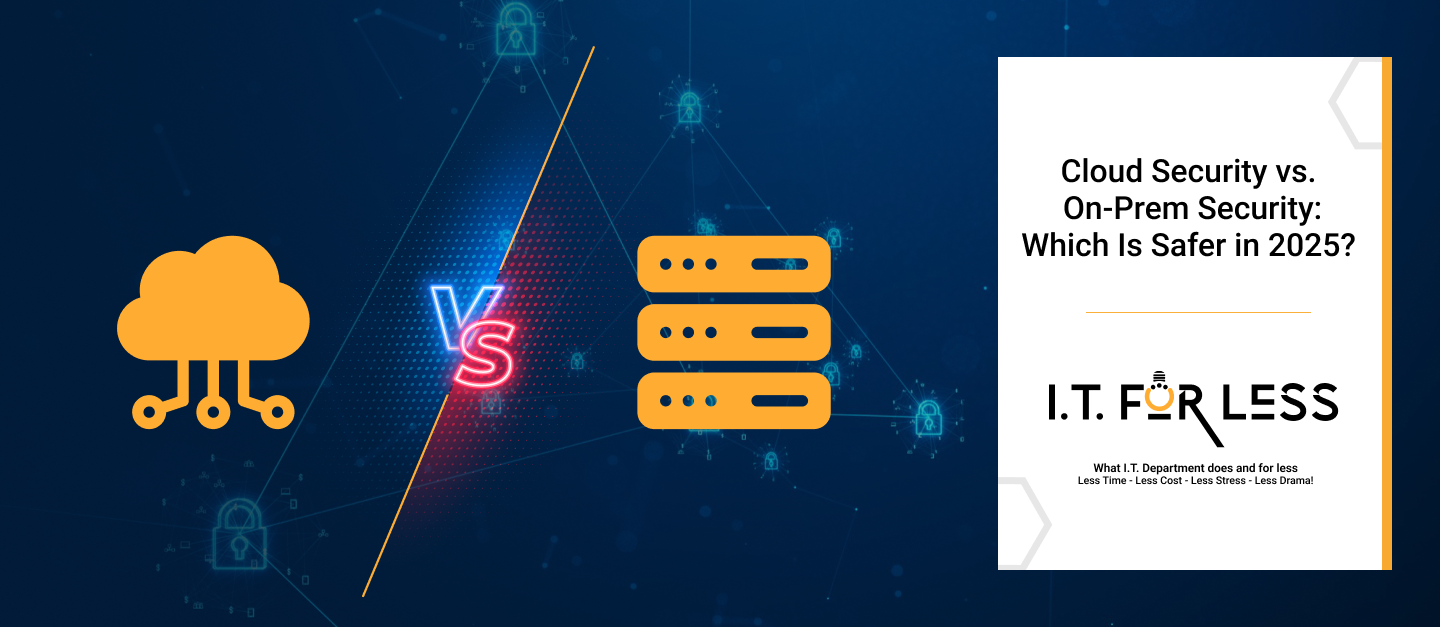For years, businesses have debated whether cloud or on-premises infrastructure is the “safer” choice for protecting sensitive data. As we enter 2025, the answer isn’t as simple as picking one over the other—it depends on how each is implemented, managed, and secured. Let’s break it down.
The Case for Cloud Security in 2025
Cloud providers like AWS, Microsoft Azure, and Google Cloud have significantly raised the bar when it comes to security. They invest billions into building resilient infrastructure, offering advanced features like:
- AI-driven threat detection that identifies anomalies in real-time.
- Built-in compliance frameworks for industries like healthcare, finance, and government.
- Automatic patching to protect against known vulnerabilities.
For small to mid-sized businesses, these capabilities are nearly impossible to replicate on-premises without massive investment.
The Case for On-Prem Security in 2025
On the other hand, keeping infrastructure on-prem still appeals to organizations that want full control over their data and systems. Benefits include:
- Complete visibility into every server, storage system, and network component.
- Custom security protocols tailored to unique business needs.
- No reliance on third-party providers, reducing concerns about data residency or vendor lock-in.
However, the burden of keeping systems patched, updated, and compliant falls entirely on the internal IT team—a challenge for many.
Key Factors to Consider
Instead of asking which is “safer” in general, businesses should consider:
- Internal expertise – Do you have the team and resources to maintain high on-prem security standards?
- Compliance needs – Does your industry require specific data residency or audit controls?
- Scalability – Can your current model handle future growth without creating security gaps?
- Shared responsibility – In the cloud, security is a partnership. Providers secure the infrastructure, but businesses must protect apps, configurations, and user access.
The Verdict for 2025
The reality is that neither cloud nor on-prem is inherently safer. A poorly managed on-prem setup is just as risky as a misconfigured cloud deployment. In 2025, the winning strategy is often a hybrid approach: using the cloud for agility and resilience, while keeping certain sensitive workloads on-prem for compliance or control.
Security isn’t about where your data lives—it’s about how you protect it.
